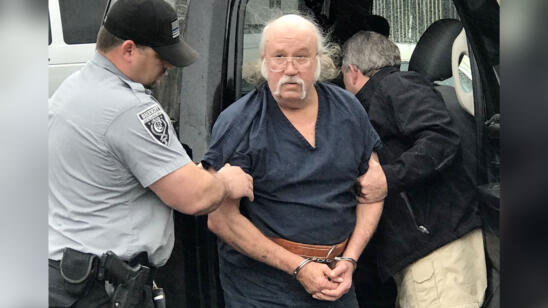Julie Williams and Lollie Winans don’t just smile, they beam from photos of their camping trip in Shenandoah National Park. With the Blue Ridge Mountains in the backdrop, the snapshots epitomize the joy of escaping to one of America’s national treasures. But unlike the millions who leave savoring memories of magnificent vistas and wildlife, Williams, 24, and Winans, 26, never came home.
They are among a small number of visitors to national parks whose stays are tinged with horror.
On June 1, 1996, rangers found the two women, their throats slashed, lying in a scenic campsite near a mountain stream. Although the double murder in Virginia made national headlines, Williams’ and Winans’ killer was never found.
Their images are among 28 listed on the U.S. National Park Service’s Cold Case webpage. Of those cold cases, only a few are obvious crimes with a body and evidence of foul play.
In a majority of investigations—such as the disappearance of Chiricahua National Monument Ranger Paul Fugate—the victims seem to vanish into thin air.
None is forgotten, say authorities and family members. “I think about Julie every day,” her father Tom Williams tells A&E True Crime.
A killer in the woods
Julianne “Julie” Williams grew up in Minnesota, the kind of girl who never saw a tree she didn’t want to climb. A natural athlete, she won the state doubles championship in tennis in high school, but also had a cerebral side. “Julie was a prolific writer,” Tom Williams says.
At college, Williams discovered a passion for geology and social justice. Fluent in Spanish, she volunteered as an interpreter for local police, translating for domestic violence victims, Tom Williams recalls.
Laura “Lollie” Winans grew up in the affluent community of Grosse Pointe, Michigan, but suffered trauma in her childhood that she struggled to overcome, journalist Barry Yeoman reported. Despite the ghosts in her past, friends remembered her energy, sense of humor and kindness.
Winans eventually found her calling as a wilderness guide and met Williams at an outdoor educational program. The two fell in love, and planned an idyllic trip to Shenandoah in May 1996, partly to celebrate Williams’ new job as a geologist in Vermont’s Lake Champlain region.
‘She believed in justice’
Photos of the vacation show the women relaxing, basking in sunlight and sweeping views. They were last seen May 24, 1996, hiking with their golden retriever, Taj.
When Julie didn’t return, Tom Williams reported her missing on May 31, sparking an intensive search by park rangers.
Taj was located first, wandering alone in the woods. On June 1, rangers found the bodies of the young women, at their campsite off the Bridle Trail, just a short distance from the Skyland Resort. Someone had gagged and bound them, then cut their throats.
Despite the proximity to the Skyland Resort, a watering hole that draws packed crowds in the summer, investigators had few clues or witnesses.
But a year later, a female cyclist was almost abducted in Shenandoah by an enraged driver who screamed obscenities and tried to run her off the road.
The driver, Darrell David Rice of Columbia, Maryland, was caught by police and later convicted of attempted abduction. Prosecutors placed Rice at Shenandoah during the time period Winans and Williams were vacationing and claimed he killed them in a homophobic rampage, which he denied.
Rice was indicted for murder in 2001, only to have the case fall apart in 2004 with insufficient forensic evidence.
The National Park Service is still investigating and has offered an award for tips leading to the murderer’s arrest and conviction.
The mystery haunts Julie’s family, who created a charitable fund in her name. “It doesn’t get much easier,” Tom Williams says, adding his daughter “believed in justice. Not in a vindictive way but in a ‘fair is fair’ way.”
A perfect place for a crime
On January 13, 1980, Paul Braxton Fugate, a veteran park ranger at Chiricahua National Monument in southeast Arizona, needed fresh air.
It was a slow Sunday, so “he turned to another employee and said, ‘if I’m not back by 4:30 p.m., lock up.’ He was never seen again,” Special Agent Clay Anderson, of the National Park Service’s Investigative Services Branch, tells A&E True Crime.
Fugate was wearing a green-and-gray park service uniform, with a gold-colored ranger badge pinned on his shirt. The Park Service and local police conducted an intensive hunt for the 41-year-old but found nothing.
Some have speculated he could have stumbled onto a drug-smuggling operation or other crime in the sprawling wilderness of Chiricahua.
The park is located on the Mexico border in Chochise County, a region known as a hotbed of drug and human trafficking, Arizona police say.
“It’s a very, vast canyon,” Cochise County Sheriff Mark Dannels tells A&E True Crime. “It’s beautiful … and it’s also great when it comes to the concealment of crime.”
‘Twists and turns’
In the weeks and months after Fugate vanished, different stories of his fate poured in. One witness said he’d seen the ranger driven out of the park in a vehicle with two unknown suspects. Another tipster said he’d been buried in Wisconsin. Then sightings were reported in a bar and in Belize.
The massive file on Fugate offers a conflicted portrait. There’s Paul, the nice guy and hard worker who loved his job. And there’s Paul who got into trouble with his supervisor for sporting long hair and had a bad attitude.
“There’s more twists and turns in this case than on the Blue Ridge Highway,” Anderson says. One thing is certain. “Somebody out there knows something,” the investigator notes. “There’s always hope someone will come forward.”
Recently, several retired law-enforcement officials who knew Fugate reviewed the case and offered some fresh perspectives.
“They took a passionate interest in it,” Dannels says. “We hope it will pay off by bringing justice to this case.”
Anderson promises “we will keep working until we know for certain what happened. [Fugate’s] mother passed away never knowing what happened to her son. His family and his wife live with it every day. That’s part of the motivation to keep working.”
More wilderness mysteries
Here’s a look at other unsolved cases in the national parks. Tips on National Park Service cold cases can be given anonymously at 888-653-0009.
- Arman B. Johnson, 44, was a local radio show host in Hawaii when he visited Hawai’i Volcanoes National Park on April 13, 2005. His body was found with a single gunshot wound to his upper back/neck. The murder took place at the park, close to the Mamalahoa Highway.
- Stacey Ann Arras was just 14 when she disappeared at Yosemite National Park on July 17, 1981. The teenager was on a trip with her father with a group that had stopped at a camp site that afternoon. Stacey set off on a hike with a 77-year-old man who was on the trip; he grew tired and rested while she continued and was last seen standing on a rock.
Related Features:
The Crime Solving Detectives of America’s National Parks
An FBI Agent Recounts a Repulsive Request by Yosemite Killer Cary Stayner During His Interrogation
Connecticut Serial Killer William Devin Howell Describes the Shocking Details of His Crimes


